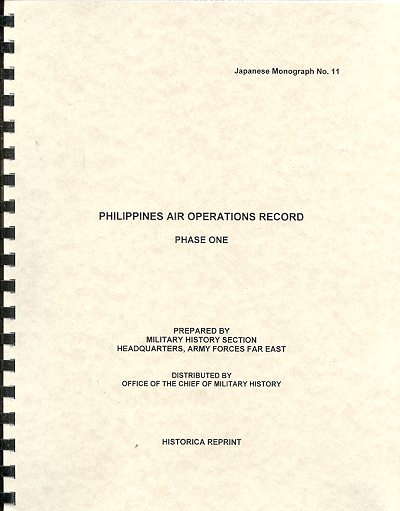 When first
contacted by Historica to review these documents, I was intrigued so chose some
regarding information that I had little experience with. I also wasn't really
sure just exactly what to expect. I had read through the web site and saw what
was offered, but I also knew that I needed to read a few of them for myself.
When first
contacted by Historica to review these documents, I was intrigued so chose some
regarding information that I had little experience with. I also wasn't really
sure just exactly what to expect. I had read through the web site and saw what
was offered, but I also knew that I needed to read a few of them for myself.
A week or so later, this and two other monographs arrived at my
door. I decided to pick the smallest of the three to introduce myself to them.
First of all, a bit of background. This particular edition is 45 pages in
length. There are no photos, but several tables are provided. No maps are in
here either, and unless you are somewhat familiar with the Philippines, it would
be a good idea to grab an atlas as it makes understanding what's going on a lot
easier.
These monographs were compiled by the US after the end of the
war. Most of the records kept by the Japanese were either destroyed in bombing
or by the Japanese themselves after the war. Therefore, it was difficult to be
able to get any kind of meaningful information on how the Japanese waged the
war. Exciting stories of individual battles and events are great, but in order
to do any meaningful analysis, records are what are needed. Well, there weren't
any or there were darn few. As a result, a picture of just how events unfolded
was drawn after interviewing many of the surviving Japanese involved.
After much work, these monographs were completed and published
around 1952. Since then, they had been microfilmed and kept in storage.
Unfortunately, much of what was microfilmed has deteriorated to the point of
where it is useless. However Historica has managed to get piece together a
number of them that are most complete and has reprinted them.
This particular edition is on the initial air operations in the
Philippines during WWII. It covers the period of time from the initial invasion
until all Allied presence had left the island or been captured. The tone of the
monograph is not a story, but, as Sgt. Friday of Dragnet says .."just the
facts". Though not set up as a diary, it offers a look at operations over
the specific period of time and gives daily operations where they are most felt
to be needed. There is little mention of specific aircraft types other than the
usual 'type 99 recon' explanation when numbers and types are mentioned in a few
of the tables.
Much has to do with the strategic outlook of things and the
movement of units. It surprised me how much shuffling of air units took place
during this operation. A specific unit would move from Manchuria to Formosa then
to the Philippines, then to the Dutch East Indies then back to the
Philippines.....
The tables and charts give a telling tale of the steady
deterioration of Allied air power as the campaign progressed. Though mostly
dealing with air ops, it is impossible to tell the story without discussing
ground movement as well, and that adds to the interest.
Overall, I learned quite a bit that I did not know about this
particular theater of operations. Hearing about it from the Japanese point of
view made it even more interesting. To many who are used to being entertained by
books and having lots of pictures, well, you'll not like this series. However,
if you don't mind reading and actually using your brain while doing so, then
you'll find this to be quite interesting and enlightening.
Review book courtesy of
Historica,
where you can order your copy of this and many other superb aviation and
modeling books.
If you would like your product reviewed fairly and quickly by a
site that has well over 150,000 visitors a month, please contact
me or see other details in the Note to
Contributors.
 When first
contacted by Historica to review these documents, I was intrigued so chose some
regarding information that I had little experience with. I also wasn't really
sure just exactly what to expect. I had read through the web site and saw what
was offered, but I also knew that I needed to read a few of them for myself.
When first
contacted by Historica to review these documents, I was intrigued so chose some
regarding information that I had little experience with. I also wasn't really
sure just exactly what to expect. I had read through the web site and saw what
was offered, but I also knew that I needed to read a few of them for myself.